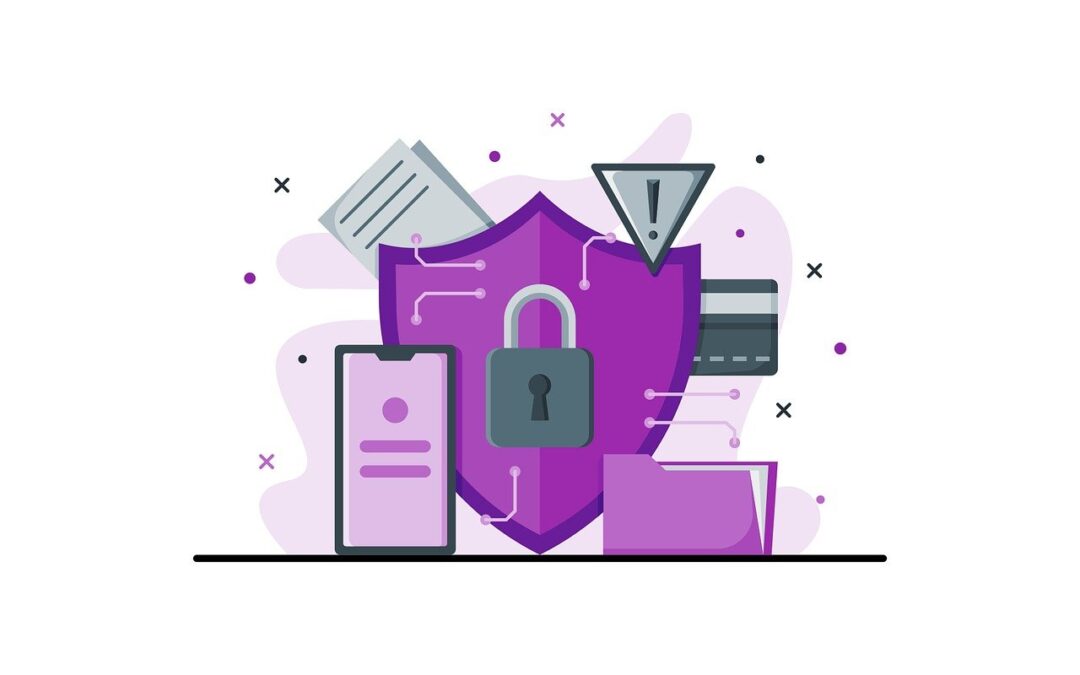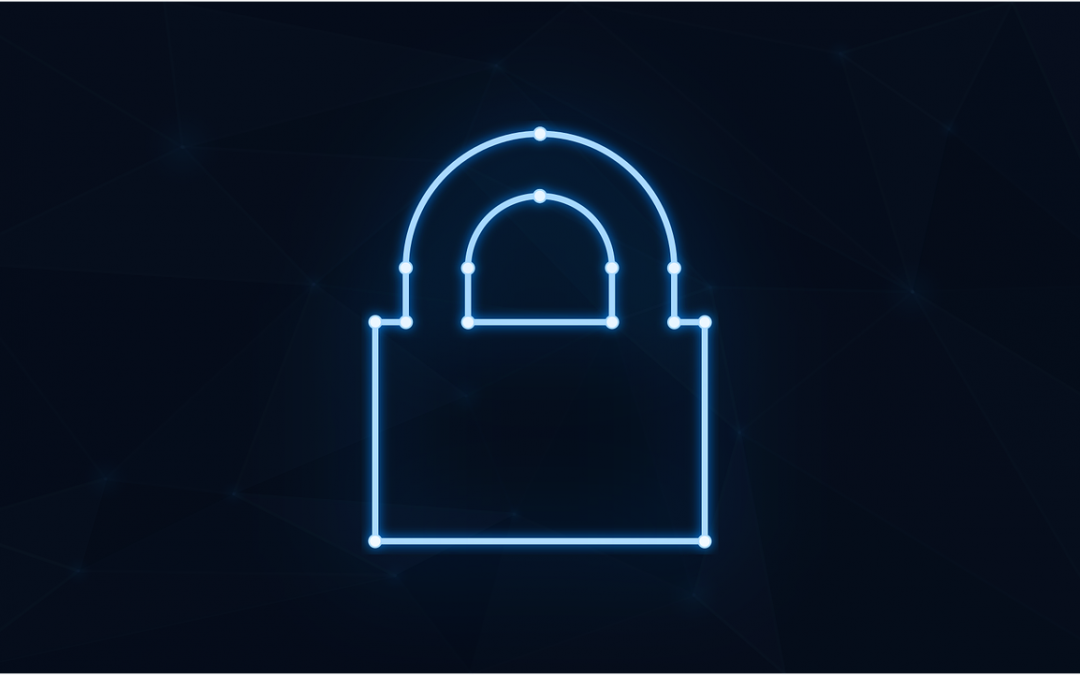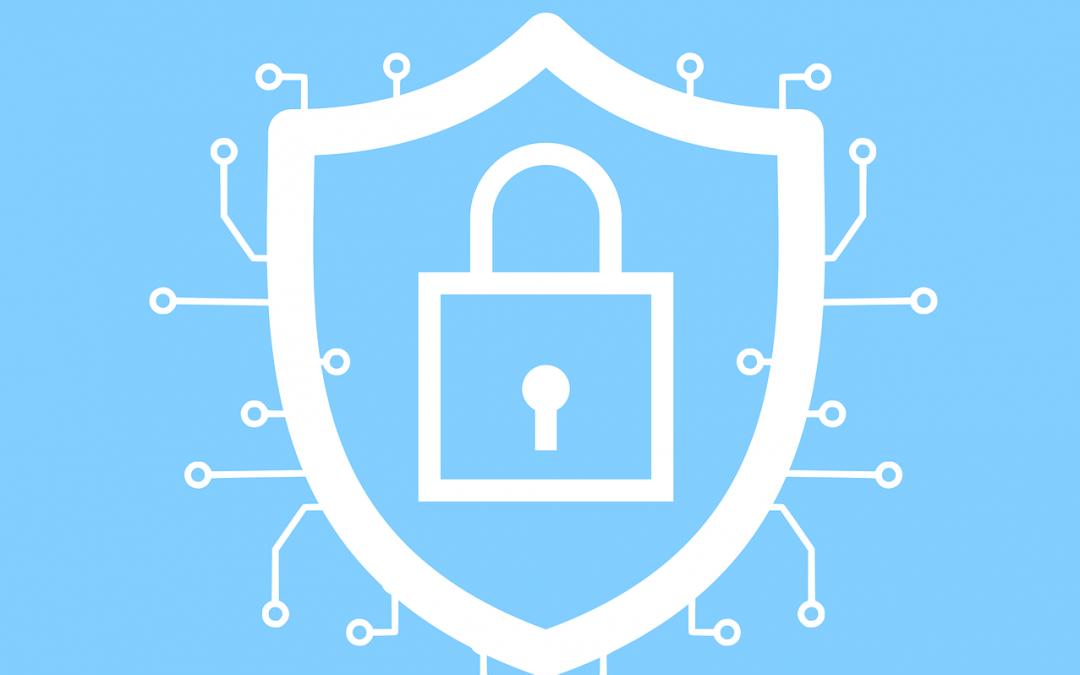
by Andrew Shone | Sep 20, 2025 | Cybersecurity, Newsfeed
Your office thermostat, conference room speaker, and smart badge reader are convenient, but they’re also doors into your network. With more devices than ever in play, keeping track can be tough, and it only takes one weak link to put your entire system at risk.
That’s why smart IT solutions matter now more than ever. A trusted IT partner can help you connect smart devices safely, keep data secure, and manage your whole setup without stress.
Here’s a practical guide designed for small teams getting ready to work with connected tech.
What is IoT?
IoT, or the Internet of Things, is all about physical devices, like sensors, appliances, gadgets, or machines, being connected to the internet. These smart tools can collect and share data, and even act on their own, all without needing someone to constantly manage them. IoT helps boost efficiency, automate tasks, and provide useful data that leads to smarter decisions for both businesses and individuals. But it also comes with challenges, like keeping data secure, protecting privacy, and keeping track of all those connected devices.
Steps To Manage IoT Security Risks for Small Businesses
1. Know What You’ve Got
Begin with all of your network’s smart devices, such as cameras, speakers, printers, and thermostats. If you are not aware of a gadget, you cannot keep it safe.
- Walk through the office and note each gadget
- Record model names and who uses them
With a clear inventory, you’ll have the visibility you need to stay in control during updates or when responding to issues.
2. Change Default Passwords Immediately
Most smart devices come with weak, shared passwords. If you’re still using the default password, you’re inviting trouble.
- Change every password to something strong and unique
- Store passwords securely where your team can consistently access them
It takes just a minute, and it helps you avoid one of the most common rookie mistakes: weak passwords.
3. Segment Your Network
Let your smart printer talk, but don’t let it talk to everything. Use network segmentation to give each IoT device space while keeping your main systems secure.
- Create separate Wi-Fi or VLAN sections for IoT gear
- Block IoT devices from accessing sensitive servers
- Use guest networks where possible
Segmented networks reduce risk and make monitoring easy.
4. Keep Firmware and Software Updated
Security flaws are found all the time, and updates fix them. If your devices are out of date, you’re wide open to cyberattacks.
- Check for updates monthly
- Automate updates when possible
- Replace devices that are no longer supported
Even older gadgets can be secure if they keep receiving patches.
5. Monitor Traffic and Logs
Once your devices are in place, watch how they talk. Unexpected activity could signal trouble.
- Use basic network tools to track how often and where devices connect
- Set alerts for strange activity, like a badge reader suddenly reaching the internet
- Review logs regularly for odd patterns
You don’t need an army of security experts, just something as simple as a nightly check-in.
6. Set Up a Response Plan
Incidents happen; devices can fail or malfunction. Without a plan, every problem turns into a major headache. Your response plan should include:
- Who to contact when devices act weird
- How you’ll isolate a problematic device
- Available standby tools or firmware
A strong response plan lets you respond quickly and keep calm when things go wrong.
7. Limit What Each Device Can Do
Not every device needs full network access. The key is permission controls.
- Turn off unused features and remote access
- Block internet access where not needed
- Restrict device functions to exact roles only
Less access means less risk, yet your tools can still get the job done.
8. Watch for Devices That Creep In
It’s easy to bring in new devices without thinking of security risks, like smart coffee makers or guest speakers.
- Have a simple approval step for new devices
- Ask questions: “Does it need office Wi-Fi? Does it store data?”
- Reject or block any gear that can’t be secured
Catching these risks early keeps your network strong.
9. Encrypt Sensitive Data
If your smart devices transmit data, ensure that data is encrypted both during transmission and while stored.
- Check device settings for encryption options
- Use encrypted storage systems on your network
Encryption adds a layer of protection without slowing things down.
10. Reevaluate Regularly
It’s easy to secure your office tech once and assume it stays that way. But tech changes fast, and so do threats.
- Do a full check-in every six months
- Reassess passwords, network segments, and firmware
- Replace devices that don’t meet today’s standards
With a regular schedule, you keep ahead without overthinking it.
Why This Actually Matters
Smart devices simplify work but can pose risks if not properly secured. More businesses are experiencing cyberattacks through their IoT devices than ever before, and these attacks are rising rapidly. Protecting your systems isn’t about expensive high-tech solutions, it’s about taking simple, smart steps like updating passwords, keeping devices up to date, and knowing what’s connected.
These simple steps can protect your business without getting in the way. Plus, with the right IT support, staying ahead of threats is simpler than you might expect.
Your Office Is Smart, Your Security Should Be Too
You don’t need to be a cybersecurity expert to protect your small office. As more smart devices like printers, thermostats, and security cameras connect to your network, hackers have more opportunities to get in. The good news? Keeping your space secure doesn’t have to be complicated or costly.
With the right IT partner who understands the unique challenges small businesses face, you can take simple steps to protect what matters. Ready to get serious about IoT security? Contact us today and partner with a team that protects small offices, without the big-business complexity.
—
Featured Image Credit
This Article has been Republished with Permission from The Technology Press.

by Andrew Shone | Sep 5, 2025 | Cybersecurity, Newsfeed
Have you ever seen a video of your favorite celebrity saying something outrageous? Then later, you find out it was completely fabricated? Or perhaps you’ve received an urgent email seemingly from your boss. But something felt off.
Welcome to the world of deepfakes. This is a rapidly evolving technology that uses artificial intelligence (AI). It does this to create synthetic media, often in the form of videos or audio recordings. They can appear real but are actually manipulated.
People can use deepfakes for creative purposes. Such as satire or entertainment. But their potential for misuse is concerning. Deepfakes have already made it into political campaigns. In 2024, a fake robocall mimicked the voice of a candidate. Scammers wanted to fool people into believing they said something they never said.
Bad actors can use deepfakes to spread misinformation. As well as damage reputations and even manipulate financial markets. They are also used in phishing attacks. Knowing how to identify different types of deepfakes is crucial in today’s world.
So, what are the different types of deepfakes, and how can you spot them?
Face-Swapping Deepfakes
This is the most common type. Here the face of one person is seamlessly superimposed onto another’s body in a video. These can be quite convincing, especially with high-quality footage and sophisticated AI algorithms.
Here’s how to spot them:
- Look for inconsistencies: Pay close attention to lighting, skin tones, and facial expressions. Do they appear natural and consistent throughout the video? Look for subtle glitches. Such as hair not moving realistically. Or slight misalignments around the face and neck.
- Check the source: Where did you encounter the video? Was it on a reputable news site or a random social media page? Be cautious of unverified sources and unknown channels.
- Listen closely: Does the voice sound natural? Does it match the person’s typical speech patterns? Incongruences in voice tone, pitch, or accent can be giveaways.
Deepfake Audio
This type involves generating synthetic voice recordings. They mimic a specific person’s speech patterns and intonations. Scammers can use these to create fake audio messages. As well as make it seem like someone said something they didn’t.
Here’s how to spot them:
- Focus on the audio quality: Deepfake audio can sound slightly robotic or unnatural. This is especially true when compared to genuine recordings of the same person. Pay attention to unusual pauses. As well as inconsistent pronunciation or a strange emphasis.
- Compare the content: Does the content of the audio message align with what the person would say? Or within the context in which it’s presented? Consider if the content seems out of character or contradicts known facts.
- Seek verification: Is there any independent evidence to support the claims made? If not, approach it with healthy skepticism.
Text-Based Deepfakes
This is an emerging type of deepfake. It uses AI to generate written content. Such as social media posts, articles, or emails. They mimic the writing style of a specific person or publication. These can be particularly dangerous. Scammers can use these to spread misinformation or impersonate someone online.
Here’s how to spot them:
- Read critically: Pay attention to the writing style, vocabulary, and tone. Does it match the way the person or publication typically writes? Look for unusual phrasing, grammatical errors, or inconsistencies in tone.
- Check factual accuracy: Verify the information presented in the text against reliable sources. Don’t rely solely on the content itself for confirmation.
- Be wary of emotional triggers: Be cautious of content that evokes strong emotions. Such as fear, anger, or outrage. Scammers may be using these to manipulate your judgment.
Deepfake Videos with Object Manipulation
This type goes beyond faces and voices. It uses AI to manipulate objects within real video footage. Such as changing their appearance or behavior. Bad actors may be using this to fabricate events or alter visual evidence.
Here’s how to spot them:
- Observe physics and movement: Pay attention to how objects move in the video. Does their motion appear natural and consistent with the laws of physics? Look for unnatural movement patterns. As well as sudden changes in object size, or inconsistencies in lighting and shadows.
- Seek original footage: If possible, try to find the original source of the video footage. This can help you compare it to the manipulated version and identify alterations.
Staying vigilant and applying critical thinking are crucial in the age of deepfakes.
Familiarize yourself with the different types. Learn to recognize potential red flags. Verify information through reliable sources. These actions will help you become more informed and secure.
Get a Device Security Checkup
Criminals are using deepfakes for phishing. Just by clicking on one, you may have downloaded a virus. A device security checkup can give you peace of mind. We’ll take a look for any potential threats and remove them.
Contact us today to learn more.
—
Featured Image Credit
This Article has been Republished with Permission from .

by Andrew Shone | Aug 15, 2025 | Cybersecurity, Newsfeed
Have you been hearing more about email authentication lately? There is a reason for that. It’s the prevalence of phishing as a major security threat. Phishing continues as the main cause of data breaches and security incidents. This has been the case for many years.
A major shift in the email landscape is happening. The reason is to combat phishing scams. Email authentication is becoming a requirement for email service providers. It’s crucial to your online presence and communication to pay attention to this shift.
Google and Yahoo are two of the world’s largest email providers. They have implemented a new DMARC policy that took effect in February 2024. This policy essentially makes email authentication essential. It’s targeted at businesses sending emails through Gmail and Yahoo Mail.
But what’s DMARC, and why is it suddenly so important? Don’t worry, we’ve got you covered. Let’s dive into the world of email authentication. We’ll help you understand why it’s more critical than ever for your business.
The Email Spoofing Problem
Imagine receiving an email seemingly from your bank. It requests urgent action. You click a link, enter your details, and boom – your information is compromised.
The common name for this is email spoofing. It’s where scammers disguise their email addresses. They try to appear as legitimate individuals or organizations. Scammers spoof a business’s email address. Then they email customers and vendors pretending to be that business.
These deceptive tactics can have devastating consequences on companies. These include:
- Financial losses
- Reputational damage
- Data breaches
- Loss of future business
Unfortunately, email spoofing is a growing problem. It makes email authentication a critical defense measure.
What is Email Authentication?
Email authentication is a way of verifying that your email is legitimate. This includes verifying the server sending the email. It also includes reporting back unauthorized uses of a company domain.
Email authentication uses three key protocols, and each has a specific job:
- SPF (Sender Policy Framework): Records the IP addresses authorized to send email for a domain.
- DKIM (DomainKeys Identified Mail): Allows domain owners to digitally “sign” emails, verifying legitimacy.
- DMARC (Domain-based Message Authentication, Reporting, and Conformance): Gives instructions to a receiving email server. Including, what to do with the results of an SPF and DKIM check. It also alerts domain owners that their domain is being spoofed.
SPF and DKIM are protective steps. DMARC provides information critical to security enforcement. It helps keep scammers from using your domain name in spoofing attempts.
Here’s how it works:
- You set up a DMARC record in your domain server settings. This record informs email receivers (like Google and Yahoo). It tells them the IP addresses authorized to send emails on your behalf.
- What happens next? Your sent email arrives at the receiver’s mail server. It is looking to see if the email is from an authorized sender.
- Based on your DMARC policy, the receiver can take action. This includes delivery, rejection, or quarantine.
- You get reporting back from the DMARC authentication. The reports let you know if your business email is being delivered. It also tells you if scammers are spoofing your domain.
Why Google & Yahoo’s New DMARC Policy Matters
Both Google and Yahoo have offered some level of spam filtering. But didn’t strictly enforce DMARC policies. The new DMARC policy raises the bar on email security.
- Starting in February 2024, the new rule took place. Businesses sending over 5,000 emails daily must have DMARC implemented.
- Both companies also have policies for those sending fewer emails. These relate to SPF and DKIM authentication.
Look for email authentication requirements to continue. You need to pay attention to ensure the smooth delivery of your business email.
The Benefits of Implementing DMARC:
Implementing DMARC isn’t just about complying with new policies. It offers a range of benefits for your business:
- Protects your brand reputation: DMARC helps prevent email spoofing scams. These scams could damage your brand image and customer trust.
- Improves email deliverability: Proper authentication ensures delivery. Your legitimate emails reach recipients’ inboxes instead of spam folders.
- Provides valuable insights: DMARC reports offer detailed information. They give visibility into how different receivers are handling your emails. As well as help you identify potential issues. They also improve your email security posture.
Taking Action: How to Put DMARC in Place
Implementing DMARC is crucial now. This is especially true considering the rising email security concerns with email spoofing. Here’s how to get started:
- Understand your DMARC options
- Consult your IT team or IT security provider
- Track and adjust regularly
Need Help with Email Authentication & DMARC Monitoring?
DMARC is just one piece of the email security puzzle. It’s important to put email authentication in place. This is one of many security measures required in the modern digital environment. Need help putting these protocols in place? Just let us know.
Contact us today to schedule a chat.
—
Featured Image Credit
This Article has been Republished with Permission from .

by Andrew Shone | Aug 1, 2025 | Cybersecurity, Newsfeed
Staying ahead of threats is a challenge for organizations of all sizes. Reported global security incidents grew between February and March of 2024. They increased by 69.8%. It’s important to use a structured approach to cybersecurity. This helps to protect your organization.
The National Institute of Standards and Technology (NIST) created a Cybersecurity Framework (CSF). It provides an industry-agnostic approach to security. It’s designed to help companies manage and reduce their cybersecurity risks. The framework was recently updated in 2024 to NIST CSF 2.0.
CSF 2.0 is a comprehensive update that builds upon the success of its predecessor. It offers a more streamlined and flexible approach to cybersecurity. This guide aims to simplify the framework. As well as make it more easily accessible to small and large businesses alike.
Understanding the Core of NIST CSF 2.0
At the heart of CSF 2.0 is the Core. The Core consists of five concurrent and continuous Functions. These are: Identify, Protect, Detect, Respond, and Recover. These Functions provide a high-level strategic view of cybersecurity risk, as well as an organization’s management of that risk. This allows for a dynamic approach to addressing threats.
Here are the five Core Functions of NIST CSF 2.0:
- Identify
This function involves identifying and understanding the organization’s assets, cyber risks, and vulnerabilities. It’s essential to have a clear understanding of
what you need to protect. You need this before you can install safeguards. - Protect
The protect function focuses on implementing safeguards. These protections are to deter, detect, and mitigate cybersecurity risks. This includes measures such as firewalls, intrusion detection systems, and data encryption. - Detect
Early detection of cybersecurity incidents is critical for minimizing damage. The detect function emphasizes the importance of detection, as well as having mechanisms to identify and report suspicious activity. - Recover
The recover function focuses on restoring normal operations after a cybersecurity incident. This includes activities such as data restoration, system recovery, and
business continuity planning. - Respond
The respond function outlines the steps to take in the event of a cybersecurity incident. This includes activities such as containment, eradication, recovery, and
lessons learned. - Recover
The recover function focuses on restoring normal operations after a cybersecurity incident. This includes activities such as data restoration, system recovery, and
business continuity planning.
Profiles and Tiers: Tailoring the Framework
The updated framework introduces the concept of Profiles and Tiers. These help organizations tailor their cybersecurity practices. They can customize them to their specific needs, risk tolerances, and resources.
Profiles
Profiles are the alignment of the Functions, Categories, and Subcategories. They’re aligned with the business requirements, risk tolerance, and resources of
the organization.
Tiers
Tiers provide context on how an organization views cybersecurity risk as well as the processes in place to manage that risk. They range from Partial (Tier 1) to
Adaptive (Tier 4).
Benefits of Using NIST CSF 2.0
There are many benefits to using NIST CSF 2.0, including:
- Improved Cybersecurity Posture: By following the guidance in NIST CSF 2.0, organizations can develop a more comprehensive and effective cybersecurity program.
- Reduced Risk of Cyberattacks: The framework helps organizations identify and mitigate cybersecurity risks. This can help to reduce the likelihood of cyberattacks.
- Enhanced Compliance: NIST aligned CSF 2.0 with many industry standards and regulations. This can help organizations to meet compliance requirements.
- Improved Communication: The framework provides a common language for communicating about cybersecurity risks. This can help to improve communication between different parts of an organization.
- Cost Savings: NIST CSF 2.0 can help organizations save money. It does this by preventing cyberattacks and reducing the impact of incidents.
Getting Started with NIST CSF 2.0
If you are interested in getting started with NIST CSF 2.0, there are a few things you can do:
- Familiarize yourself with the framework: Take some time to read through the NIST CSF 2.0 publication. Familiarize yourself with the Core Functions and categories.
- Assess your current cybersecurity posture: Conduct an assessment of your current cybersecurity posture. This will help you identify any gaps or weaknesses.
- Develop a cybersecurity plan: Based on your assessment, develop a cybersecurity plan. It should outline how you will put in place the NIST CSF 2.0 framework in your organization.
- Seek professional help: Need help getting started with NIST CSF 2.0? Seek out a managed IT services partner. We’ll offer guidance and support.
By following these steps, you can begin to deploy NIST CSF 2.0 in your organization. At the same time, you’ll be improving your cybersecurity posture.
Schedule a Cybersecurity Assessment Today
The NIST CSF 2.0 is a valuable tool. It can help organizations of all sizes manage and reduce their cybersecurity risks. Follow the guidance in the framework. It will help you develop a more comprehensive and effective cybersecurity program.
Are you looking to improve your organization’s cybersecurity posture? NIST CSF 2.0 is a great place to start. We can help you get started with a cybersecurity assessment. We’ll identify assets that need protecting and security risks in your network. We can then work with you on a budget-friendly plan. Contact us today to schedule a cybersecurity assessment.
—
Featured Image Credit
This Article has been Republished with Permission from .

by Andrew Shone | Jul 28, 2025 | Cybersecurity, Newsfeed
Imagine this: you leave your house for vacation. You live in a shady neighborhood but feel confident your locks are secure, but you also don’t check
them daily. Are they really locked and safe? A tiny crack or hidden weakness could have occurred. It’s a disaster waiting to happen.
That’s the risk of neglecting continuous cybersecurity monitoring. Cyber threats are constantly evolving, and traditional security measures are no longer enough. Continuous monitoring acts as your vigilant digital guard. It’s constantly checking for weaknesses. It sounds the alarm before attackers exploit them.
Why Continuous Monitoring Matters
There are several reasons you need to watch your network. It’s not just a “good to have.” Here’s why continuous monitoring is a cybersecurity must for businesses of all sizes.
Breaches Happen Fast
Cyberattacks can happen in seconds. They exploit vulnerabilities before you even know they exist. Continuous monitoring provides real-time insights. It allows you to identify and respond to threats swiftly, minimizing potential damage.
Advanced Threats Need Advanced Defenses
Hackers are constantly developing sophisticated techniques. Some can bypass traditional perimeter defenses. Continuous monitoring delves deeper. It analyzes network traffic, user behavior, and system logs. It uncovers hidden threats lurking within your network.
Compliance Requirements Often Mandate It
Many industry regulations and data privacy laws require organizations to have continuous monitoring. Failure to comply can result in hefty fines and reputational damage.
Peace of Mind and Reduced Costs
Continuous monitoring helps prevent costly breaches and downtime. It also reduces the workload for security teams. It automates routine tasks, allowing them to focus on strategic initiatives.
What Does Continuous Monitoring Look Like?
Continuous monitoring isn’t a single tool. It’s a holistic approach that combines different elements. These include:
- Log Management: Security logs are collected and analyzed for suspicious activity. Logs come from firewalls, devices, and applications.
- Security Information and Event Management (SIEM): SIEM systems collect security data. They tap into various sources. They provide a centralized view of your security posture and identify potential threats.
- Vulnerability Scanning: Regular scans identify weaknesses in your systems and applications. This allows you to patch them before attackers exploit them.
- User Activity Monitoring: Monitoring user behavior can identify suspicious activity. For example, unauthorized access attempts or data exfiltration.
- Network Traffic Analysis: Monitoring network traffic can reveal several risks:
- Malware
- Suspicious communication patterns
- Attempts to breach your network defenses
Benefits Beyond Threat Detection
Continuous monitoring offers advantages beyond just identifying threats. Here are some extra benefits.
Improved Threat Detection Accuracy
Continuous monitoring reduces false positives. It does this by analyzing vast amounts of data. This allows your security team to focus on genuine threats.
Faster Incident Response
Continuous monitoring provides real-time alerts. This enables a quicker response to security incidents, minimizing potential damage.
Enhanced Security Posture
Continuous monitoring aids in identifying vulnerabilities. It helps you rank patching and remediation efforts. This proactively strengthens your security posture.
Compliance Reporting
Continuous monitoring systems can generate reports. This helps you prove compliance with relevant regulations. It also saves you time and resources during audits.
Getting Started with Continuous Monitoring
Implementing continuous monitoring doesn’t have to be overwhelming. You can begin with a few common-sense steps.
Assess Your Needs
Identify your organization’s specific security needs and compliance requirements. Have a cybersecurity assessment done. This is the best way to identify vulnerabilities you should address.
Choose the Right Tools
Select monitoring tools that align with your needs and budget. Consider managed security service providers (MSSPs) for a comprehensive solution. We can help you ensure a holistic cybersecurity strategy. Plus, we can tailor solutions for your budget.
Develop a Monitoring Plan
Define what your monitoring plan will look like. This helps ensure that things don’t get missed. Here are some things to include in your plan:
- How you will track data
- How you will handle alerts
- Who handles responding to incidents
Invest in Training
Train your security team on how to use the monitoring tools as well as how to effectively respond to security alerts. Include training on reporting from monitoring systems. Ensure your team knows how to understand the insights they offer.
Continuous Monitoring: Your Cybersecurity Lifeline
In today’s threat landscape, continuous monitoring is not a luxury. It’s a security necessity. Proactive monitoring of your systems and data has many benefits. You can identify threats early and respond swiftly, as well as reduce the impact of cyberattacks.
Don’t wait for a security breach to be your wake-up call. Embrace continuous monitoring and take control of your cybersecurity posture. An ounce of prevention is worth a pound of cure, especially in the digital world.
Need Help with Your Cybersecurity Strategy?
Monitoring is one part of a holistic approach to cybersecurity. We’ll be happy to help you protect your business. We can customize a plan that works for your needs and budget.
Contact us today to discuss your needs.
—
Featured Image Credit
This Article has been Republished with Permission from .

by Andrew Shone | Jul 16, 2025 | Cybersecurity, Newsfeed
Zero Trust security is rapidly transforming the cybersecurity landscape. It moves away from traditional perimeter-based security models. In this approach, every connection attempt is continuously verified before granting resource access.
56% of global organizations say adopting Zero Trust is a “Top” or “High” priority.
This approach offers significant security advantages. But the transition process presents several potential pitfalls. Running into these can harm a company’s cybersecurity efforts.
Below, we’ll explore these common roadblocks. We’ll also offer guidance on navigating a successful Zero Trust security adoption journey.
Remembering the Basics: What is Zero Trust Security?
Zero Trust throws out the old “castle and moat” security model. The one where everyone inside the network perimeter is trusted. Instead, it assumes everyone and everything is a potential threat. This is true even for users already inside the network. This may sound extreme, but it enforces a rigorous “verify first, access later” approach.
Here are the key pillars of Zero Trust:
- Least Privilege: Users only get access to the specific resources they need to do their jobs, no more.
- Continuous Verification: Authentication doesn’t happen once. It’s an ongoing process. Users and devices are constantly re-evaluated for access rights.
- Micro-Segmentation: IT divides the network into smaller segments. This limits the damage if a breach occurs.
Common Zero Trust Adoption Mistakes
Zero Trust isn’t a magic solution you can simply buy and deploy. Here are some missteps to avoid:
Treating Zero Trust as a Product, Not a Strategy
Some vendors might make Zero Trust sound like a product they can sell you. Don’t be fooled! It is a security philosophy that requires a cultural shift within your organization.
There are many approaches and tools used in a Zero Trust strategy. These include tools like multi-factor authentication (MFA) and advanced threat detection and response.
Focus Only on Technical Controls
Technology indeed plays a crucial role in Zero Trust. But its success hinges on people and processes too. Train your employees on the new security culture and update access control policies. The human element is an important one in any cybersecurity strategy.
Overcomplicating the Process
Don’t try to tackle everything at once. This can be overwhelming, and smaller companies may give up. Start with a pilot program focusing on critical areas. Then, gradually expand your Zero Trust deployment bit by bit.
Neglecting User Experience
Zero Trust shouldn’t create excessive hurdles for legitimate users. Adopting controls like MFA can backfire if employees aren’t involved. Find the right balance between security and a smooth user experience. Use change management to help ease the transition process.
Skipping the Inventory
You can’t secure what you don’t know exists. Catalog all your devices, users, and applications before deploying Zero Trust. This helps identify potential access risks. It also provides a roadmap for prioritizing your efforts.
Forgetting Legacy Systems
Don’t leave older systems unprotected during your Zero Trust transition. Integrate them into your security framework or consider secure migration plans. Forgotten legacy systems can lead to data breaches that impact your entire network.
Ignoring Third-Party Access
Third-party vendors can be a security weak point. Clearly define access controls and check their activity within your network. Set time-limited access as appropriate.
Remember, Zero Trust is a Journey
Building a robust Zero Trust environment takes time and effort. Here’s how to stay on track:
- Set Realistic Goals: Don’t expect overnight success. Define achievable milestones and celebrate progress along the way.
- Embrace Continuous Monitoring: Security threats are constantly evolving. Continuously watch your Zero Trust system and adjust your strategies as needed.
- Invest in Employee Training: Empower your employees as active participants in your Zero Trust journey. Regular security awareness training is vital.
The Rewards of a Secure Future
Avoid these common mistakes and adopt a strategic approach. This will enable your business to leverage the big advantages of Zero Trust security. Here’s what you can expect:
- Enhanced Data Protection: Zero Trust minimizes the damage from a potential breach. It does this by limiting access to sensitive data.
- Improved User Experience: Streamlined access controls create a smoother experience for authorized users.
- Increased Compliance: Zero Trust aligns with many industry regulations and compliance standards.
Are you ready to take the first step with Zero Trust security? Equip yourself with knowledge, plan your approach, and avoid these common pitfalls. This will enable you to transform your security posture as well as build a more resilient business in the face of evolving cyber threats.
Schedule a Zero Trust Cybersecurity Assessment
Zero Trust is quickly becoming a security expectation around the world. Our team of cybersecurity experts can help you get started deploying it successfully. Deploying it is a continuous journey towards a more secure future. We’re happy to be your trusted guides.
Contact us today to schedule a cybersecurity assessment to get started.
—
Featured Image Credit
This Article has been Republished with Permission from .






